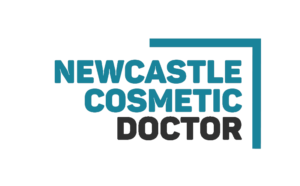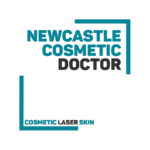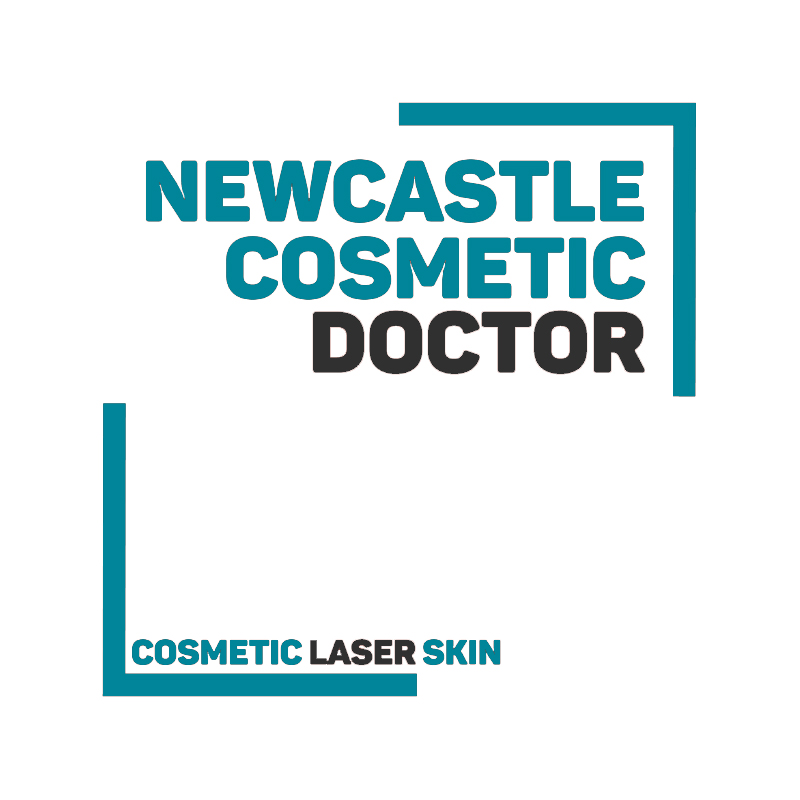Applicability: All NCD staff involved in topical skincare recommendations and retail.
1. Purpose and Policy Statement
This manual establishes a comprehensive, patient-centred, evidence-based framework for advanced non-prescription topical products used and retailed by Newcastle Cosmetic Doctor. It mandates lawful classification, conservative clinical use, transparent counselling, and robust incident management to protect patients and the clinic while delivering predictable cosmetic outcomes. 1 2 3 4 5 6
The policy covers enzyme formulations, peptide serums, amino-acid and DNA/PDRN creams, and non-prescription ‘skin booster’ topicals. It prohibits therapeutic claims, mandates AICIS compliance for ingredients, and sets a standard approach to patch testing, barrier-first care, escalation schedules, and red-flag management. 2 3 4 5
2. Scope, Definitions, and Regulatory Context
2.1 Scope. Applies to all NCD staff who recommend or sell advanced topical products. Excludes S4 medicines and injectables. Requires governance sign-off for new products before listing on clinic shelves or protocols. 1 3 4 8
2.2 Definitions. Cosmetic: products that improve appearance or condition without therapeutic claims. Therapeutic goods: products making disease/treatment claims or altering physiology, typically requiring ARTG. Excluded goods: products that may resemble therapeutic goods but are excluded if specific conditions are met. Sunscreens may be therapeutic goods; secondary sunscreens embedded in cosmetics have distinct requirements. 2 4 5 7
2.3 Regulatory context. Cosmetic ingredient introductions require AICIS compliance; advertising associated with a regulated health service must meet AHPRA rules; claims must be truthful and not misleading per Australian Consumer Law; any sunscreen claims must follow TGA/ARPANSA guidance. 1 2 3 4 9 8
3. Scientific Background and Rationale
3.1 Enzymes. Proteolytic enzymes (e.g., papain, bromelain) offer gentle corneodesmolysis with fewer micro-tears than harsh scrubs, reducing irritancy risk in sensitive phenotypes when application time is controlled. 9 10
3.2 Peptides. Topical peptides may assist with hydration, barrier signalling or appearance of fine lines; clinical effects are modest and cosmetic in scope, requiring conservative claims and robust patient expectation setting. 11 12 1
3.3 DNA/PDRN creams. Emerging literature suggests potential trophic effects in barrier recovery and post-procedure comfort; claims must be kept cosmetic (‘improves the appearance/feel’) rather than therapeutic. Avoid implying wound-healing treatment. 12 2 5
4. Patient Pathway: Assessment, Patch Testing, and Eligibility
4.1 Pre-consultation history. Document skin diagnoses, allergies, pregnancy/lactation, Fitzpatrick type, previous reactions, and recent procedures. Note occupational sun exposure and current routine. Obtain consent to collect/store health information. 13 8
4.2 Examination. Evaluate barrier integrity, erythema, scaling, active dermatitis/infection and identify red flags for medical escalation. Photograph baseline with consent to support monitoring and adverse-event review. 6 8
4.3 Patch testing. For new actives or sensitive skin, apply a rice-grain amount to a post-auricular or mandibular area nightly for 3 nights. Proceed only if no significant erythema/pruritus or vesiculation develops.
4.4 Eligibility decision. Defer actives if barrier is compromised or after ablative/needling procedures for 5–7 days. Use a barrier-first micro-routine until skin is stable, then reattempt introduction.
5. Consent and Patient Education (Staged)
5.1 Verbal discussion. Explain cosmetic intent, expected sensations, the gradual nature of results, and the possibility of transient dryness or tingling. Provide clear safety-net instructions. 1 14
5.2 Written information. Give a one-page aftercare sheet outlining application order, frequency, photoprotection, and when to contact the clinic. 11 10
5.3 Cooling-off. When recommendations are bundled with paid services, ensure decisions are free of pressure and that patients can take time to consider options. 1
6. Application Protocols and Escalation Schedules
6.1 General method. Nightly routine: cleanse; pat dry; wait 10–15 minutes; apply a pea-sized amount to the entire target area, avoiding eyes and lips; moisturiser layering as needed. Start 2–3 nights/week and increase as tolerated. 11
6.2 Enzymes. Limit contact time per label (typically minutes, not hours). Rinse thoroughly. Use 1–3 times weekly; avoid over-exfoliation in barrier-fragile patients. 15
6.3 Peptides. Daily or twice-daily application is acceptable; benefits are incremental; pair with photoprotection and moisturiser; avoid promising therapeutic reversal of ageing. 13 1 2
6.4 DNA/PDRN creams. Introduce once nightly; observe for sensitivity; avoid claims implying tissue regeneration. Suitable as comfort adjuncts post-procedure when epithelium is intact and clinician has cleared actives. 14 2 5
6.5 ‘Topical boosters’. Treat as cosmetics. Position as hydration/comfort enhancers; avoid any suggestion of medical treatment or structural modification. 2 5
7. Monitoring, Outcomes, and Review
7.1 Early response (weeks 1–2). Expect mild dryness/tingle. If stinging >30 minutes or visible dermatitis occurs, reduce frequency or pause and focus on barrier repair.
7.2 Review (weeks 2–4). Assess tolerance, adherence, technique; review photos; adjust frequency. Document advice and outcomes. 8 11
7.3 Maintenance (weeks 8–12). Continue tolerated routine; consider seasonal adjustments and reinforce SPF behaviours. 9 10
8. Contraindications and Precautions
Absolute: known allergy to ingredients; active infection or weeping dermatitis at application site. Relative: pregnancy/lactation for certain actives (use conservative, non-medicated routines); recent ablative procedures; high UV exposure without reliable SPF use. 6 9 10
9. Adverse Reactions and Red-Flag Protocol
9.1 Mild irritant dermatitis. Reduce frequency; increase moisturiser; pause exfoliants; reassess in 72 hours.
9.2 Moderate reaction (erythema with patchy scaling). Cease actives for 5–7 days; commence barrier-first routine; clinician review prior to re-challenge.
9.3 Severe reaction (vesiculation, blistering, spreading erosion, marked oedema). Stop all actives; cool compress; urgent medical review within 24–48 hours; consider allergic contact dermatitis work-up and differential diagnosis. 8
9.4 Documentation. Record lot numbers (if retained), counseling provided, and outcome. Consider supplier notification if product defect suspected. Maintain internal incident register. 8 3
10. Documentation, Privacy, and Governance
Document discussions, instructions, and adverse events in the health record. Store photos and personal information securely with role-based access. Retain records per statutory periods and clinic policy. 6 8
Marketing materials must be reviewed for compliance with AHPRA, TGA Code, and Australian Consumer Law. Maintain a product approvals register and change log. 1 2 3
11. Patient Aftercare and Self-Management
Use a bland moisturiser twice daily during initiation. Apply SPF 50+ every morning and reapply when outdoors. Avoid waxing, peels and laser unless cleared. Report any severe or unexpected reaction immediately. 9 10 11
12. Audit, Review, and Continuous Improvement
Quarterly review of: (a) product dossiers and claims; (b) adverse events; (c) patient feedback; (d) staff adherence to counselling scripts. De-list non-performing or non-compliant items and update training accordingly. 8 3
Sources
- AHPRA & National Boards. Advertising a regulated health service – Guidelines (2020). https://www.ahpra.gov.au/Resources/Advertising-hub/Advertising-guidelines-and-other-guidance/Advertising-guidelines.aspx ↩︎
- TGA. Therapeutic Goods Advertising Code (2021) – Guidance. https://www.tga.gov.au/resources/resource/guidance/therapeutic-goods-advertising-code-2021-guidance ↩︎
- ACCC. Australian Consumer Law – claims and representations. https://www.accc.gov.au/business/advertising-and-promotions ↩︎
- AICIS (formerly NICNAS). Cosmetics regulation – ingredients, categorisation, records. https://www.industrialchemicals.gov.au/ ↩︎
- TGA. Therapeutic Goods (Excluded Goods) Determination 2018. https://www.tga.gov.au/resources/resource/guidance/excluded-goods ↩︎
- OAIC. Guide to health privacy for health service providers. https://www.oaic.gov.au/privacy/ ↩︎
- ACSQHC. NSQHS Standards – Clinical Governance & Partnering with Consumers. https://www.safetyandquality.gov.au/standards/nsqhs-standards ↩︎
- TGA. Sunscreens regulatory guidance (primary vs secondary). https://www.tga.gov.au/resources/resource/guidance/australian-regulatory-guidelines-non-prescription-medicines-argnm-sunscreens ↩︎
- ARPANSA. UV radiation and sun protection. https://www.arpansa.gov.au/understanding-radiation/radiation-sources/sun-protection ↩︎
- RACGP. Patient communication & safety netting. https://www.racgp.org.au/ ↩︎
- NHMRC. Australian clinical guideline development standards. https://www.nhmrc.gov.au/ ↩︎
- PubMed. Peptide cosmeceuticals overview. https://pubmed.ncbi.nlm.nih.gov/29345245/ ↩︎
- PubMed. Polydeoxyribonucleotide (PDRN) topical effects and wound modulation. https://pubmed.ncbi.nlm.nih.gov/31266338/ ↩︎
- PubMed. Enzyme-based exfoliation and skin tolerance. https://pubmed.ncbi.nlm.nih.gov/25804116/ ↩︎


